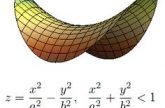Avatar and Ayahuasca
James Cameron’s Avatar is one of the most amazing films to have come out in the last few years. Absolutely beautiful in its depiction of how the native cultures live in harmony with the planet they live on, and how western white males seek to rape and pillage the land, this film has some very powerful messages indeed. When you analyse this film, you’ll realise that there is an underlying connection between Avatar and Ayahuasca, the plant medicine of Peru.
Avatar is a live action film with a new generation of special effects. It takes us to a spectacular world beyond imagination, where a reluctant hero embarks on a journey of redemption and discovery as he leads an epic battle to save a civilisation.
James Cameron, the Oscar-winning director of “Titanic,” first conceived the film years ago. However, the means to realise his vision did not yet exist. Now, after four years of actual production work, Avatar delivers a fully immersive cinematic experience of a new kind, where the revolutionary technology invented to make the film disappears into the emotion of the characters and the sweep of the story.
The Storyline
The story’s hero is Jake Sully, a former Marine who is confined to a wheelchair. Bitter and disillusioned, he’s still a warrior at heart. All Jake ever wanted was something worth fighting for, and he finds it in the place he least expected: on a distant world. Jake is recruited to join an expedition to the moon Pandora. It is corporate interests that are strip-mining for a mineral worth $20 million per kilogram on Earth. To facilitate their work, the humans use a link system that projects a person’s consciousness into a hybrid of humans and Pandora’s indigenous humanoids, the Na’vi.
Hybrid with a Heart
The human-Na’vi hybrid is a fully living, breathing body that resembles the Na’vi. Except that it possesses the individual human’s thoughts, feelings and personality. The hybrid being is known as an avatar. Jake can once again walk now that he is in his new avatar form. His mission is to interact with and infiltrate the Na’vi in the hope of enlisting their help. At a very minimum he wants their acquiescence in mining the ore. Jake gets himself into a dangerous situation and reluctantly, a beautiful Na’vi female named Neytiri saves his life. Even in his avatar body, Jake represents to her the human encroachment on the Na’vi’s unspoiled world. As Jake’s relationship with Neytiri deepens, along with his respect for the Na’vi, he faces the ultimate test. Jake then leads an epic conflict that will decide nothing less than the fate of an entire world.
Aya-Avatar
In paradoxical and altogether predictable terms, James Cameron’s ravishing Avatar sets a blue man group of mystically attuned forest dwellers against the aggressive and heartless exploitation that characterises the military-industrial-media complex, with its virtual interfaces, bio-tech chimeras, and cyborg war machines. The paradox, of course, is that a version of this latter complex is responsible for delivering Cameron’s visions to us in the first place.
To wit: before a recent screening of the film at the Metreon IMAX theater in San Francisco, we hapless begoggled ones were barraged with military ads, not to mention a triumphant techno-fetishist breakdown on the Imax technology that would soon transport us to the planet Pandora almost as thoroughly (and resonantly) as the handicapped jarhead Jake jacks into his computer-generated avatar body.
But those are behind the scenes ironies. With its floating Roger Deanscapes and hallucinogenic flora, the manifest world of Avatar instead spoke another truth: that the jungle pantheism that now pervades the psychoactive counterculture has gone thoroughly mainstream. Of course, noble savage narratives of ecological balance and shamanic wisdom have been haunting the Rousseau-mapped outback of the western mind for centuries. That said, Avatar represents some important twists in that basic tale.
Connection to the Gods
The most important of these is that the Na’vi’s nearly telepathic understanding of their environment is grounded not only in ritual, plant-lore, and that earnest seriousness that now afflicts PC Hollywood Indians, but in an organic communications network: the fibrous, animated, and vaguely repulsive pony-tail tentacles that not only allow the Na’vi to form direct control links with animals but also, through the optical filaments of the “Tree of Souls,” to commune with both ancestors and the Eywa, the biological spirit of the planet whose name resonates with Erda, our own Earth.
Call it Ayahuasca lite. For while Avatar features nothing like the South American shaman lore and stupendous Aya visuals that litter the otherwise very bad 2004 Western released here as Renegade, the film does suggest that the bitter jungle brew, and ideas of ecological wisdom now attached to it, is having a trickle-down effect.
Ecological Consciousness
The banisteriopsis caapi vine that gives Ayahuasca its name (though not its most hallucinogenic alkaloids) is also known as the “Vine of Souls,” which echoes the Na’vi’s Tree of Souls. And when Sigourney Weaver attempts to establish the efficacy of the Trees through a neurological discourse of electrical connection, the corporate tool Parker asks what she’s been smoking—a backhanded way of acknowledging how much Avatar’s visionary take on ecological consciousness is grounded in psychoactive consciousness.
After all, beyond a thriving and in many ways damaging Ayahuasca tourist market in Brazil and Peru, clandestine Aya circles manned by South American shamans and all manner of Euro-American facilitators are are now well established throughout the west. Among the professional creative classes who make up a sizable portion of West Coast seekers—for spirit and/or thrills—Ayahuasca could almost be said to be mainstream. So it no longer matters whether Cameron or his animators have themselves drunk the tea; its active compounds are already swimming in the cultural water supply.
Eco-futuristic dreams are now indistinguishable from the visionary potential of media technology itself. Indeed, whether you are talking form (ground-breaking 3D animation) or content (cyber-hippie wet-dream decor), Cameron’s visual and technological rhetoric is impossible to disentangle from hallucinogenic experience.
Avatar and Ayahuasca Connection
OK, maybe I am the one smoking something. But if there is an Aya-Avatar connection, it would explain one crucial way in which the film differs from conventional “noble savage” mysticism. Rather than ground the Na’vi’s grooviness in their folklore or spiritual purity, the film instead presents the vision of a direct and material communications link with the plant mind. Which means that Eywa (aka Aya) does not have to be believed – she can be experienced. After the temporary fusion with the Tree of Souls that fails to prevent her death, Weaver’s chain-smoking left-brain doctor happily confirms Ewya’s existence. Like the Vine of Souls now wending its way through the developed world, the Tree of Souls becomes a kind of bio-mystical media, a visionary communications matrix that uplinks the souls of the dead and the network mind of the ecosphere itself.
Drink the Jungle Juice by Erik Davis (www.techgnosis.com) January 7, 2010
. ?*?*?
.
Would you like to support our Foundation? Do you know of a teenage girl who loves to read books? Here’s a link to one of our fundraisers – a teen book titled The Bravehearts of Belgrave High. Click on the following link to read more:


















